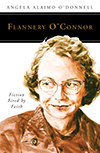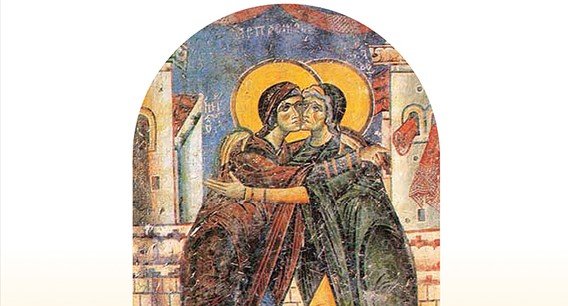
Friday Favourites: Flannery O’Connor
My parish church, some time ago, switched from packaged communion wafers to substantial bread. Normally, we’d make do with wafers that looked and tasted like styrofoam cutouts, but after they started using the substantial bread at special occasions, it became a regular occurrence. It was only a pinch of bread—half an entire bite, if that—but it made the weight of the communion more real.
Flannery O’Connor viewed her own life as “ordinary as a loaf of bread”: born and raised in Georgia, she moved to Iowa City for the Iowa Writer’s Workshop. Afterwards she worked in Yaddo and New York City before she returned to Milledgeville because of her failing health. She was only thirty-nine when she died of complications from lupus; fourteen of those years were spent living at home and battling illness.
“She saw little in her own life that would evoke these emotions [of surprise, shock, excitement, amusement], so she had to content herself with obscurity,” writes Angela Alaimo O’Donnell in Flannery O’Connor: Fiction Fired by Faith, adding, “or so she thought.” O’Donnell goes on to bring Flannery O’Connor to life in a thoughtful and compassionate book, that is just as interested in exploring her personal life—and her faith—as it is in her bibliography.
Each step of the way is coloured with Flannery’s strong sense of humour. Flannery described herself as an ‘innocent speller’ and remarked that ‘I went to a progressive high school where one did not read if one did not wish to. I did not wish to…’ Moving to Milledgeville from New York, she told a friend that ‘We have a girls’ college here, but the lacy atmosphere is fortunately destroyed by a reformatory, an insane asylum and a military school.’ When talking about her rebellion as a child, she wrote that
‘From 8 to 12 years it was my habit to seclude myself in a locked room every so often and with a fierce (and evil) face, whirl around in a circle with my fists knotted, socking the… guardian angel with which the Sisters assured us we were all equipped…’
Flannery wrote in her own journal, ‘My thoughts are so far away from God. He may as well not have made me… Today I have proved myself a glutton—for Scotch oatmeal cookies and erotic thought. There is nothing left to say of me,’ and ‘What I am asking for is really very ridiculous. Oh Lord, I am saying, at present I am a cheese, make me a mystic, immediately.’ It is this sense of humour that both helped her cope with the changes in her life—her crippling illness, the early loss of her father, moving out on her own—and informed her personal belief.
 One significant moment that O’Donnell highlights is when Flannery visited the Cloisters at the Metropolitan Museum of Art in New York. She walked through the exhibits of altarpieces and sculptures, tapestries and crucifixes, and found herself in front of one object: a statue about four feet high, sitting on a pedestal, of the Virgin and Christ Child laughing together. ‘I was greatly taken with it,’ she wrote, ‘and should I ever get back to the Cloisters, which is unlikely, I mean to see if it is there.’
One significant moment that O’Donnell highlights is when Flannery visited the Cloisters at the Metropolitan Museum of Art in New York. She walked through the exhibits of altarpieces and sculptures, tapestries and crucifixes, and found herself in front of one object: a statue about four feet high, sitting on a pedestal, of the Virgin and Christ Child laughing together. ‘I was greatly taken with it,’ she wrote, ‘and should I ever get back to the Cloisters, which is unlikely, I mean to see if it is there.’
Another highlight was when Flannery had a conversation with her friends and the subject turned to the Eucharist, ‘which I, being the Catholic, was obviously supposed to defend.’ One of them, Mrs. Broadwater, had thought of the Host bread as the Holy Ghost as a child—since it was the ‘most portable’ aspect of God—but now considered it a symbol.
‘I then said,’ Flannery wrote, ‘in a very shaky voice, “Well, if it’s a symbol, to hell with it.”’ Perhaps the ordinary loaf of bread, which Flannery O’Connor saw as the sum total of her life, wasn’t so ordinary after all.
-Gillian Robinson, Production Editor


